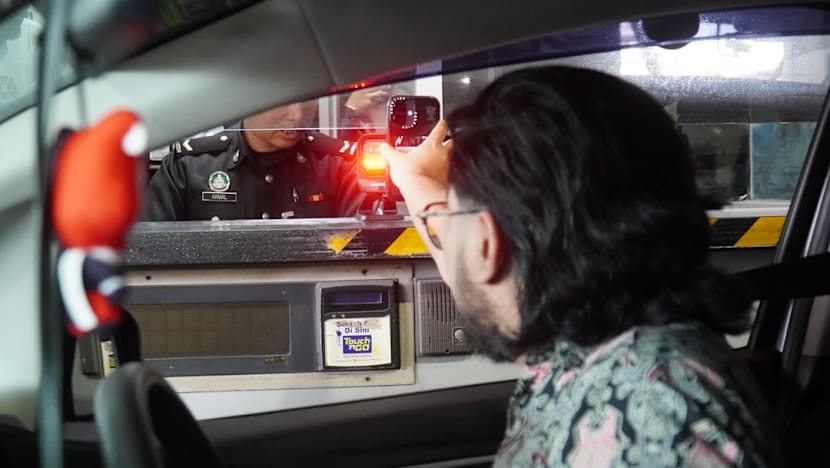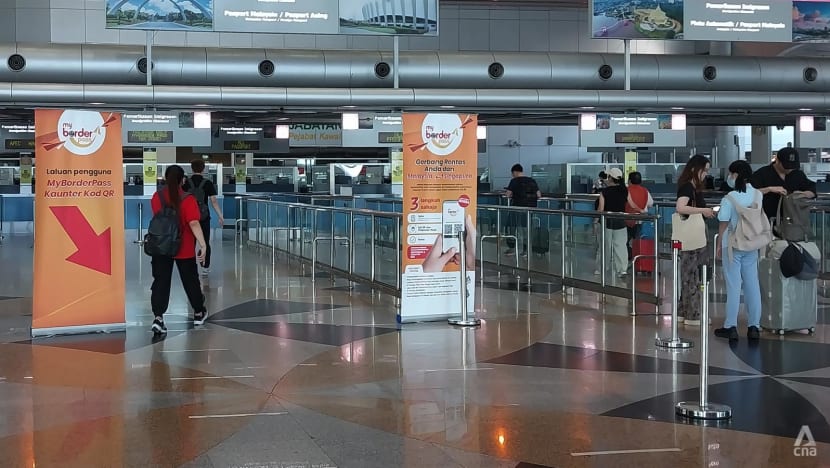Foreigners can use QR code to clear Malaysia immigration at Johor land checkpoints from Sep 22
This simplified clearance at the country’s borders will be facilitated under a trial run for the National Integrated Immigration System (NIISe).

The MyNIISe app allows multiple travellers in a car to register using a single QR code for immigration clearance. (Photo: Facebook/Fazli Salleh)

This audio is generated by an AI tool.
JOHOR BAHRU: From Monday (Sep 22), Singaporeans and other foreign travellers will be able to clear Johor land checkpoints using just QR codes without needing to show their passports.
In a press statement released on Wednesday, Malaysia’s home ministry said that this simplified clearance at the country’s southern borders will be facilitated under a pilot for the National Integrated Immigration System (NIISe), which will run for five months until Feb 28, 2026.
“The public including foreigners are encouraged to download the MyNIISe app for entry and departure immigration at the entry points during this trial phase,” it said.
The ministry added that travellers are reminded to still bring their passports and other travel relevant travel documents to clear immigration, in line with Malaysian law.
The trial will also be rolled out concurrently in phases at main airports around the country - Kuala Lumpur International Airport Terminals 1 and 2, Penang, Kota Kinabalu and Kuching.
In several posts on its Facebook page, NIISe said that car immigration booths at the Bangunan Sultan Iskandar (BSI) customs, immigration and quarantine complex linked to the Woodlands Causeway and Sultan Abu Bakar immigration complex linked to the Tuas Second Link will facilitate app users.
The MyNIISe app will also allow those travelling in groups in a car to register using a single QR code.
This appears to be an upgrade to the current MyBorderPass application used by Malaysians, which requires a single QR code for every traveller.
In July, Malaysia Home Minister Saifuddin Nasution said that NIISe was in development and will begin operations in phases from March 2026.
He said then that QR code immigration for non-citizens, with foreigners from 63 countries and territories able to use the NIISe system.
These also include travellers from China, US, Japan and Australia among others.
He added that artificial intelligence will play a “significant role” in the NIISe project to improve detection and screening at entry points.
These features include an automated biometric identification system - which integrates facial, fingerprint and iris recognition.
The NIISe project is set to replace the Malaysian Immigration System (MyIMMs), which has been in operation for over 20 years.
The MyNIISe app is available on the Apple App store, Google Play Store as well as Huawei App Gallery.
Saifuddin previously said that the QR code immigration system will reduce the number of immigration officers needed to man the counters by “nearly 60 per cent” allowing them to be redeployed to other areas.

In its recent statement on Wednesday, the Home Ministry said that even with NIISe’s launch, travellers can continue to use the MyBorderPass application to clear immigration.
Thus far, QR code clearance in Malaysia has been facilitated through the MyBorderPass application.
In July, Saifuddin said that 786,603 Malaysians have downloaded the MyBorderPass app since its trial phase began in January.
CNA understands that the MyNIISe app is likely to replace MyBorderPass after the trial phase for the former ends in March.
Singapore rolled out QR code immigration clearance at its land checkpoints with Johor on Mar 19 last year, and many motorists have said it has cut their travel times.
Singaporeans use the MyICA app which is linked to their passports.
For foreign visitors, a physical passport is required for those entering Singapore for the first time, as well as those re-entering using a different passport from their last visit to the country. These travellers are able to use QR codes for immigration clearance on subsequent trips.
















